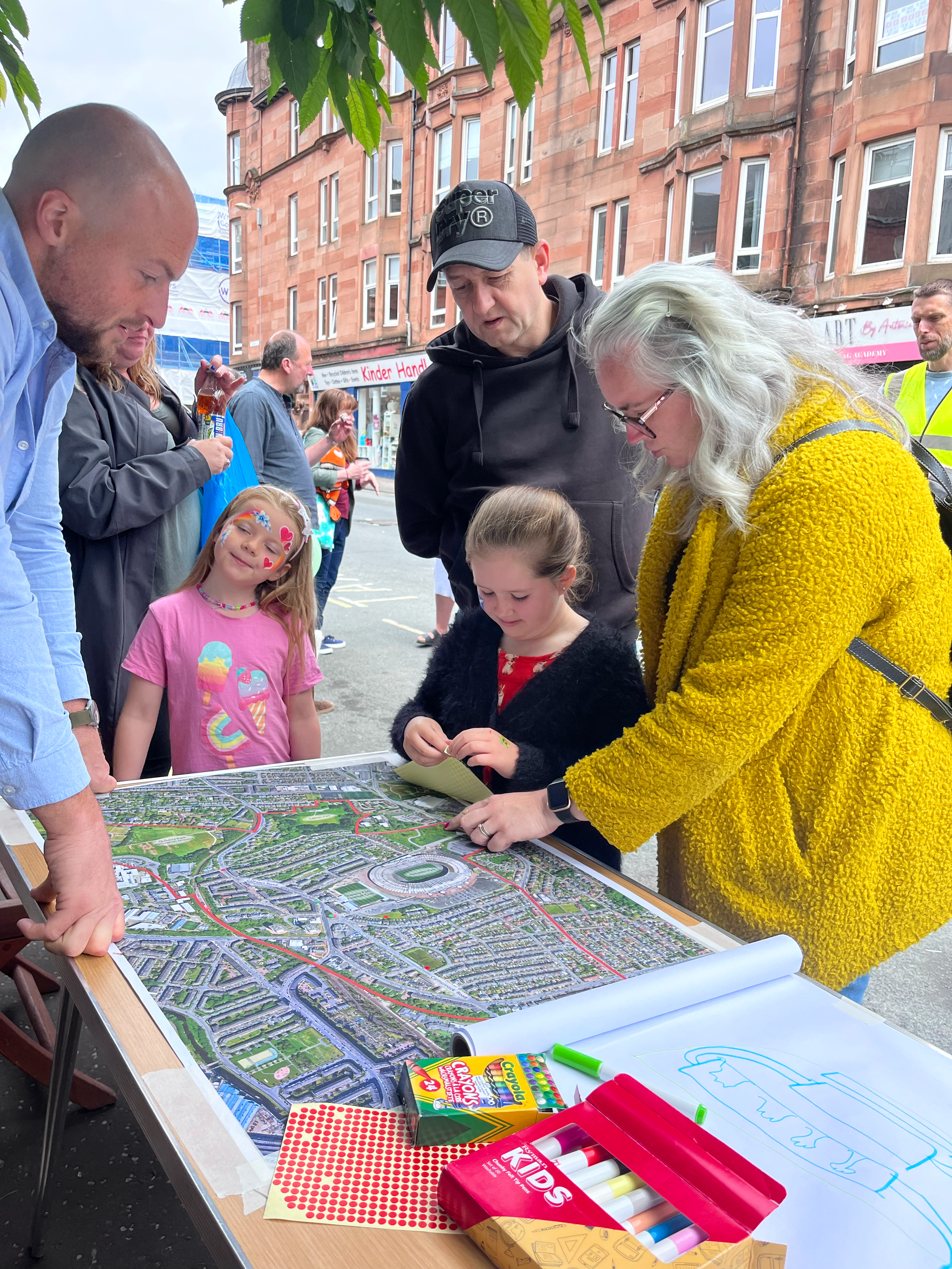
Local Place Plans
Glasgow, Scotland
Planning | Engagement | Community-led Design
Throughout 2024 and 25, KMA were commissioned by several Glasgow community bodies to develop Local Place Plans (LPPs) with them. This is a relatively new mechanism for communities to feed into the statutory planning process, initially introduced in the Planning (Scotland) Act 2019.
KMA worked with communities in Springburn; Mount Florida; and around Queen’s Park at Shawlands, Strathbungo, Langside, Battlefield and Camphill. While each was seeking to develop robust and authentic community-led plans, they were all different. Each one these three distinctive parts of the city differed in their scope of local opportunities and challenges, as well as their demographic and spatial qualities.
A major focus for each LPP was around ensuring that they represented the views and aspirations of local people, as these are ultimately plans for the community, owned by the community. Each was developed through an iterative three-stage process and overseen by passionate and skilled steering groups of local community members and stakeholders.
While each of the plans is primarily comprised of spatial projects, with a particular focus on the custodianship of local assets, KMA also worked with communities to develop activity-based projects, which in many cases could be led by community organisations.
Across all three established areas, the communities focused on a number of recurring themes in their LPPs, including: a tension between promoting active travel and not being seen to penalise drivers; a need for local housing, particularly affordable housing, offset by reticence around any further housing, or even development of any type; traffic dominance and parking challenges; access to good quality green space and play facilities, particularly for children; declining local assets, which had historically been important resources and nodes; and a lack of dedicated community facilities.
Each of the three Local Place Plans has now been validated by Glasgow City Council as meeting the legal requirements to be published on the Council’s register of LPPs. They will be taken into account during the preparation of the new City Development Plan and can be a material consideration when planning applications are being considered by the Planning Authority.
We say thanks and well done to all the community activists and volunteers, businesses and residents, older and younger citizens, who made achievement happen, and hope they will experience the fruits of their creativity before too long.









